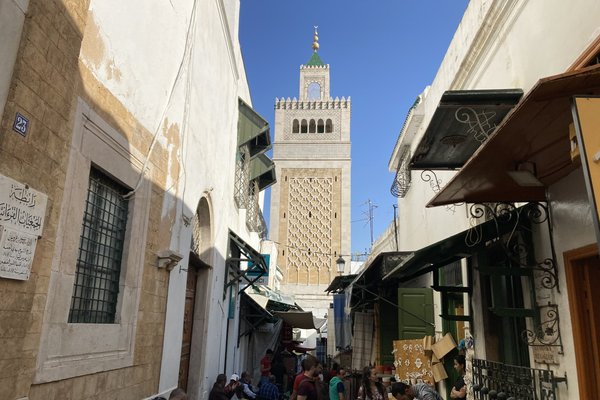Tunisia
Medina of Tunis
The medina of Tunis contains the historic center of an Arab-Islamic city that has its origins in the Middle Ages.
At the time, Tunis was the main city of Ifriqiya, the North African Mediterranean coastal region that traded with Southern Europe and the Orient. The original street plan of the medina, which dates back to the 8th century, has been well preserved. It contains some 700 monuments, including the Great Mosque, the Aghlabid Ez-Zitouna Mosque (built in 723), and the Bey's Palace.
Community Perspective: perhaps the best Medina in the country (some say even in the whole Arab world) for the atmosphere of the labyrinthine streets. It does lack great architectural highlights though.
Site Info
Official Information
- Full Name
- Medina of Tunis (ID: 36)
- Country
- Tunisia
- Status
-
Inscribed 1979
Site history
History of Medina of Tunis
- 1979: Inscribed
- Inscribed
- Type
- Cultural
- Criteria
- ii
- iii
- v
Links
- UNESCO
- whc.unesco.org
- Official
-
- commune-tunis.gov.tn — Medine de Tunis
- tunisiepatrimoine.tn — Ministry of Cultural Affairs: az-Zaytuna Mosque
All Links
UNESCO.org
- whc.unesco.org — whc.unesco.org/
Official Website
- commune-tunis.gov.tn — Medine de Tunis
- tunisiepatrimoine.tn — Ministry of Cultural Affairs: az-Zaytuna Mosque
News Article
- Feb. 27, 2020 reuters.com — Citizens step in to revive Tunis crumbling old town
Community Information
- Community Category
- Urban landscape: Arabic and Middle Eastern
Travel Information
Tunisia hotspot
Recent Connections
-
Perfect Inscriptions
1979 -
Creative Cities
Crafts and Folk ArtSee www.unesco.org
-
World Monuments Watch
Water Reservoirs of the Tunis Medina, T…
Connections of Medina of Tunis
- Individual People
-
-
Ibn Battuta
"So at last we reached the town of Tunis, and the townsfolk came out to welcome the travellers." -
Ibn Khaldun
Born and educated in Tunis and started working as a calligrapher for the ruler c1350. Tunis has erected a statue commemorating this "son of the city" but situated outside the medina in the Avenue Habib Bourguiba. -
Elias Burton Holmes
1930See www.taschen.com
-
- Geography
-
-
Mediterranean shore
-
Located in a Capital City
Tunis (Capital of Tunesia)
-
- Trivia
-
-
Built or owned by French
City hall and many other adminstrative buildings -
Moved from location of original construction
Al-Zaytuna Mosque of Tunis has columns from Carthage -
Over 100,000 inhabitants
110000 (with a population density of 341)
-
- History
-
-
Sieges and Battles
During the 8th Crusade (1270) -
Umayyad Caliphate
Founded the Medina of Tunis and built the Great (Olive Tree) Mosque of Tunis -
Republic of Genoa
-
The Crusades
Eighth CrusadeSee en.wikipedia.org
-
Ottoman Empire
Several historic mosques date to this period, such as the Sidi Youssef Dey Mosque (1631), and houses of rich merchants.See en.wikipedia.org
-
- Architecture
-
-
Medina
"The Medina of Tunis is an example of a human settlement that has conserved the integrity of its urban fabric with all its typo-morphological components. " (OUV) -
Moorish architecture
al-Zaytuna Mosque (especially the dome covering the central entrance to the prayer hall), Kasbah Mosque ("the muqarnas dome of this mosque is almost unique in Ifriqiya and was unparalleled in other Hafsid architecture") -
Muqarnas
Kasbah Mosque: "Above and in front of the mihrab is a dome sculpted in intricate muqarnas (stalactite-like decoration). This decorative technique was common in more western regions of North Africa but the muqarnas dome of this mosque is almost unique in Ifriqiya (Tunisia) and was unparalleled in other Hafsid architecture"See en.wikipedia.org
-
Domes
Tourbet el Bey: "The building is topped with domes, the main ones covered with green tortoiseshell-shaped tiles, and the facades are of ochre sandstone, decorated at regular intervals by pilasters and Italian-style entablatures in light-coloured stone."See en.wikipedia.org
-
Spolia
"borrowing some of the columns and capitals of Roman and Byzantine monuments" (wiki fr) -
Octagons
Youssef Dey Mosque: "Its minaret is the first octagonal minaret to be built in Tunis and was made by the Hafsids."See en.wikipedia.org
-
- World Heritage Process
-
-
Perfect Inscriptions
1979 -
First inscriptions
Tunisia: three inscriptions in 1979, with Medina of Tunis as the lowest number
-
- Religion and Belief
-
-
Sufism
Sidi Brahim Riahi Mausoleum: "built following the order of Ahmed I Bey to shelter the Sufi brotherhood of which Sidi Brahim Riahi had become the master in Tunis"See en.wikipedia.org
-
Notable mosques
The Great Mosque and the Aghlabid Ez-Zitouna Mosque ("Mosque of the Olive"), built in 723
-
- Human Activity
-
-
Slavery
The "Souk el Berka" was the site of the Tunis Slave Market which sold the (white) Christian victims of Barbary Coast Piracy. This didn't cease until the mid 19th Century. It is estimated that from the 16th Century over 1 million Europeans, mainly from the Mediterranean, but also from as far north as Ireland and Iceland were captured by the Barbary Pirates and sold into slavery in N Africa/Ottoman empire
-
- Constructions
-
-
Dynastic Burial Places
Tourbet el Bey: "the last resting place of most of the Husainid dynasty rulers of Tunisia"See en.wikipedia.org
-
Bazaars and Market Halls
Souq el-Attarine -
Monumental Fountains
Several
-
- WHS on Other Lists
-
-
The Jean-Paul-L’Allier Prize for Heritage
2011: Restoration and beautification project of a street circuit entitled “From Zitouna to Sidi Ibrahim” -
U.S. Ambassadors Fund
Preservation of the Photographic Collections of the Association for the Protection of the Medina of Tunis (2005), Restoration of the 19th-Century Ben Moussa Kuttab in the Medina of Tunis (2005) -
World Monuments Watch
Water Reservoirs of the Tunis Medina, Tunisia (2025)See www.wmf.org
-
Creative Cities
Crafts and Folk ArtSee www.unesco.org
-
- Timeline
-
-
Built in the 10th century
"Criterion (iii): As an important city and the capital of different dynasties (from the Banu Khurassan, to the Husseinits), the Medina of Tunis bears outstanding witness to the civilizations of Ifriqiya (essentially from the 10th century)." (OUV statement 2010)
-
- WHS Hotspots
-
-
Tunisia hotspot
In Tunis
-
News
- reuters.com 02/27/2020
- Citizens step in to revive Tunis c…
Recent Visitors
Visitors of Medina of Tunis
- Adrian Turtschi
- Alberto Rodriguez Gutierrez
- alex
- Alexander Barabanov
- Alexander Lehmann
- alicemears
- Ali Zingstra
- A. Mehmet Haksever
- AmyAbroad
- Ana
- Ana Lozano
- Argo
- Artur Anuszewski
- Aspasia
- Atila Ege
- AYB
- Badwater
- BaziFettehenne
- bergecn
- Bill Maurmann
- Boj
- Bram de Bruin
- Brendan Carroll
- Bruno_Pires
- Cezar Grozavu
- ChrisN
- Christer Sundberg
- Christian Wagner
- Christoph
- Christravelblog
- Cobaltrage
- Colossus
- Corinne Vail
- ctravel
- CugelVance
- cutecid
- Dagmara
- Dani Cyr
- Daniel Gabi
- David Marton
- del
- Dimitar Krastev
- Dimitrios Polychronopoulos
- Dolemite92
- edstar500
- Els Slots
- Emili Xaus
- Erfe91
- Erik Jelinek
- Eva Kisgyorgy
- Evgenii
- Fan Yibo
- Federico P.
- Feldhase
- Felicité
- Geert Luiken
- George Gdanski
- GeorgeIng61
- Gernot
- Gjert
- Grzegorz Andruszkiewicz
- Hammeel
- Harald T.
- Harry Mitsidis
- H Beswick
- henrik_hannfors
- henryjiao18
- Iain Jackson
- Ian Cade
- Ivan Rucek
- James Bowyer
- Janos
- Jarek Pokrzywnicki
- Javier
- Jawnbeary
- João Aender
- Joel on the Road
- Jonas Hagung
- Jonas Kremer
- jonathanfr
- Joyce van Soest
- Judit Andrea Juhász
- Juha Sjoeblom
- KarenBMoore
- Kasper
- Kbecq
- KentishTownRocks
- Kerékgyártó
- Klaus Freisinger
- Krijn
- Krzysztof B
- La Concy
- Lado Joel
- Lars Bogstad
- LaVale
- Liamps91
- Loic Pedras
- Lucio
- Ludvan
- Luis Filipe Gaspar
- Maciej Gil
- Maciej Gowin
- Malgorzata Kopczynska
- marcel staron
- MarcoB_0
- Marcobrey
- marc Rouserez
- Marlies van Wolfswinkel
- Martin
- Martina Rúčková
- Marty
- maryhattie
- MaxHeAnouBen
- MaYumin
- M. Huineman
- Michael Novins
- michaelsballard
- Mikko
- Milan Jirasek
- Miloš Tašković
- MMM
- Monica66
- Monica Tasciotti
- MoPython
- Morodhi
- Naim Y
- Niall Sclater
- Nihal Ege
- PabloNorte
- Patrik
- Paul Schofield
- Peltzi
- Persian Globetrotter
- petar
- Peter Lööv
- Petteri
- Philipp Leu
- Philipp Peterer
- Pincze
- Piotr Wasil
- Priyaranjan Mohapatra
- Randi Thomsen
- Reza
- Rick Ohm
- Roger Ourset
- Roman Bruehwiler
- Roman Raab
- Rudegirl
- Sandmann15
- Sandra!
- saraleonela
- Sergio Arjona
- Shandos Cleaver
- Solivagant
- Squiffy
- Ssong.x
- Stanimir
- Stanislaw Warwas
- Stefan Loov
- Sutul
- Svein Elias
- Szabolcs Mosonyi
- Szucs Tamas
- Tamara Ratz
- Taotao Chen
- Tarquinio_Superbo
- Thomas Buechler
- Thomas van der Walt
- Thorben
- Tim Allen
- Timothy C Easton
- tony0001
- triath
- Viaje al Patrimonio
- voyager
- WalGra
- Walter
- Westwards
- Wojciech Fedoruk
- Wo_ko
- Xiquinho Silva
- YaroMir
- Yongcheng Liu
- Zach
- ZCTLife
- Zoë Sheng
- Zsuzsanna Forray
Community Reviews
Show full reviews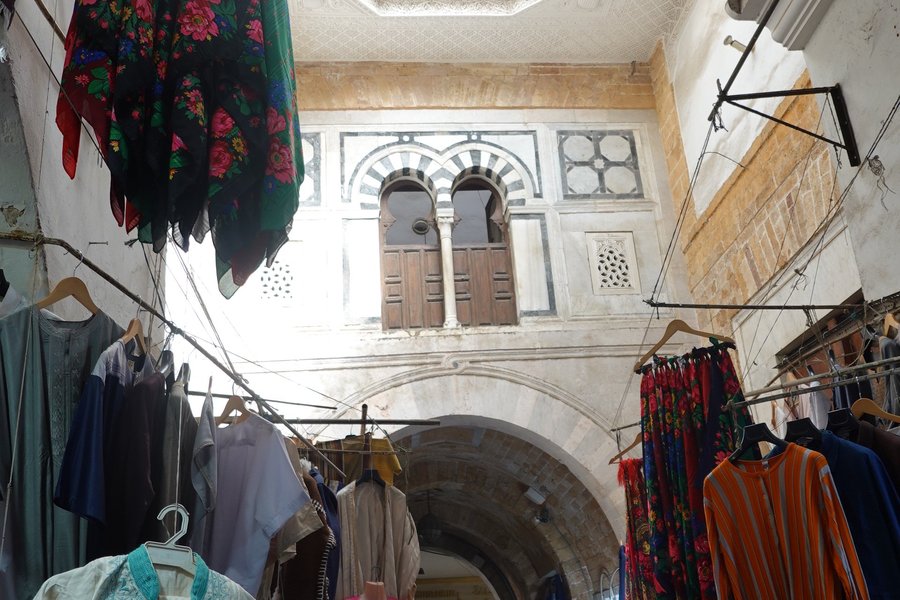
After picking up my better half from Tunis airport, who I had missed so much during the first part of my trip to Tunisia, we went as a happy couple to the medina to spend a night at the Dar Ya hotel.
Having abandoned Wilson the mobile home in the guarded Mohammed V parking lot along the eponymous boulevard, we walked up the prestigious Habib Bourguiba Boulevard and then Avenue de France to the Bab el-Bahr gate, the main entrance to the medina from the French colonial city. Note that unlike Sousse and Kerouan, the walls of the medieval city (7th-16th century) were demolished at the end of the 19th century under the French protectorate.
How can you express your feelings once you've entered Jeema ez-Zitouna Street? The contrast between the colonial city and the medina is as strong as the Harissa of Cap Bon. The street is narrow and cluttered with all sorts of things, especially touristy ones, but it's worth pushing your way to the Great Mosque, then the western, northern, and southern parts of the city, which are more confidential and residential.
We stayed two days in the medina and you have to devote that much time to visiting it, because, yes, the medina has more than 700 remarkable monuments, most of them Islamic, in an extremely limited space, but they still have to be open to the public! And so for some of them we had to try twice, with no guarantee of success!
Luckily we …
Keep reading 0 comments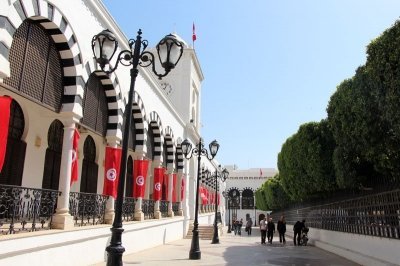
Tunis was, compared to the Moroccan Medinas I visited, a rather enjoyable visit. It seems a bit cleaner, vendors are much less aggressive and it’s easier to navigate within the streets. The downside is that it lacks real highlights. It’s one of these places where you can aimlessly wander around for one or two hours and somehow nothing is really memorable. The government district and the Kasba are worth passing by. The main mosque was closed for non-Muslims. We walked from our hotel to the Medina. The rest of the center of Tunis is, compared to the others I saw in Tunisia, the closest to a decent city with a normal street layout and even a city train. The Avenue Habib Bourguiba is mentionable, with the Tunis Cathedral and the theatre. For most, Tunis is probably an easy pick, as it’s the main airport to enter the country and several other WHS are within reach.
Keep reading 0 comments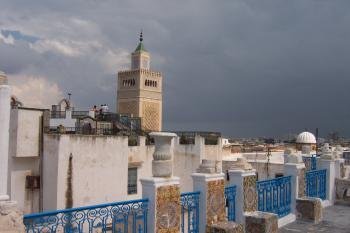
The Medina of Tunis is perhaps the best Medina in the country, whilst the sites are nothing spectacular, and you can walk straight past them if you do not keep an eye out!, but the atmosphere of the labyrinthine streets is great!
The main way through is just an endless stream of shop keepers trying to sell you souvenirs, but if you duck off down some side alleys and get to some other markets you will start to see more of the real Tunis. It takes some time to really get acclimatised to Medina life but once you do it is great!
The central mosque I found to be a little disappointing especially as, not being a Muslim I had to pay just to walk through the gate to a very small viewing area to see a courtyard that was being renovated.
The best thing to do is just to get in and wander aimlessly, buy things from the vendors; especially the Barbary Figs (Prickly Pears!) they are sold on carts the whole way around the medina and they cost 100mils. (About ,08 € cents) and they even get peeled for you, go into a tea room and just sit with the locals who are ridiculously friendly, then go off and barter for some souvenirs.
Tip: if you want some roof top views many of the shops have terraces which you can go up to but don’t expect to get away to quickly when you come down to quickly as …
Keep reading 0 comments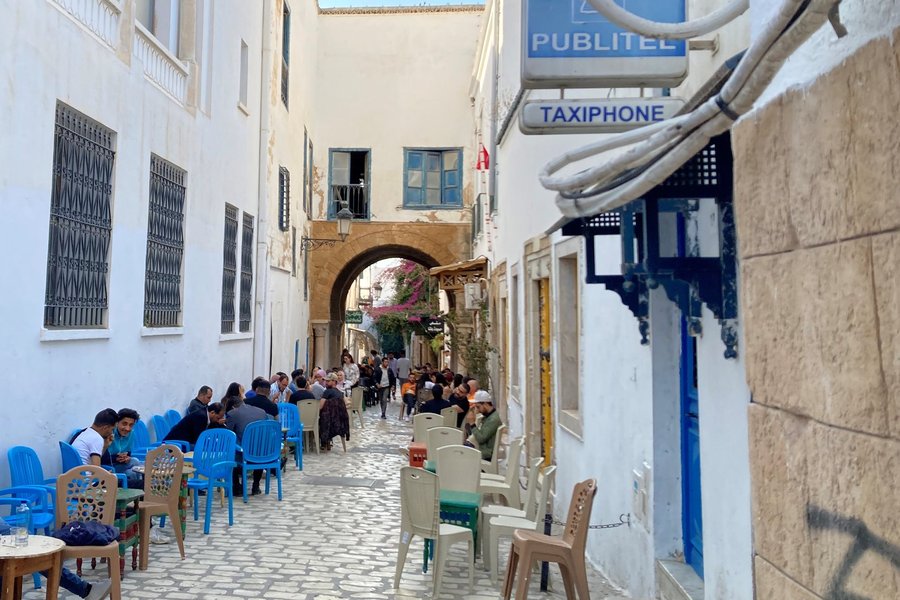
The old town of Tunis is one of the best medinas one can visit in the whole Arab world - and certainly one of the most accessible. It may not be overly spectacular, but it gives you a good impression of Arab history and culture - and it is definitely cleaner than, say, Cairo. A nice cup of tea and some haggling in the bazaar make for an enjoyable day.
Keep reading 0 comments
